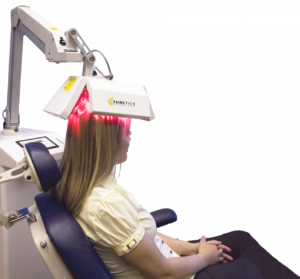Because of the ultraviolet radiation it emits, the sun is inherently dangerous to human skin. In fact, the American Academy of Dermatology stipulates that there is no safe way to tan. Tanning is the skin’s natural response to damage from the sun. Additionally, the Environmental Protection Agency proclaims that everybody, regardless of race or ethnicity, is subject to the potential adverse effects of overexposure to the sun. That’s why everyone needs to protect their skin from the sun every day.
How We Burn
When ultraviolet light penetrates the epidermis it stimulates melanin, the substance responsible for skin pigmentation. Up to a point, the melanin absorbs dangerous UV rays before they do serious damage. Melanin increases in response to sun exposure, which is what causes the skin to tan. This is a sign of skin damage, not health. Sunburns develop when the UV exposure is greater than the skin’s natural ability to protect against it.
Sunscreens and Sunblocks
The sun emits two types of ultraviolet (UV) rays that are harmful to human skin. UVA rays penetrate deep into the dermis and lead to wrinkles, age spots and skin cancers. UVB rays are responsible for causing sunburn, cataracts and immune system damage. Melanoma is thought to be associated with severe UVB sunburns that occur before the age of 20.
Sunscreens absorb ultraviolet light so that it doesn’t reach the skin. Look for sunscreens with the active ingredients PABA, benzophenones, cinnamates or salicylates. Sunblocks literally block the UV rays instead of absorbing them. Key active ingredients for sunblock success are titanium oxide and zinc oxide.
There is no sunscreen or sunblock that works 100%. The U.S. Food and Drug Administration regulates the manufacture and promotion of sunscreens. Sunscreens are given a SPF (Sun Protection Factor) number that indicates how long a person can remain in the sun without burning. It is recommended that people use products with a SPF of 15 or greater. Sunscreens are not generally recommended for infants six months old or younger. Infants should be kept in the shade as much as possible and should be dressed in protective clothing to prevent any skin exposure and damage.
There is no such thing as “all-day protection” or “waterproof” sunscreen. No matter what the SPF number, sunscreens need to be re-applied every 2 to 3 hours. Products that claim to be “waterproof” can only protect against sunburn up to 80 minutes in the water. Products labeled “water resistant” can only protect against sunburn up to 40 minutes in the water.
Even in the worst weather, 80% of the sun’s UV rays can pass through the clouds. Additionally, sand reflects 25% of the sun’s UV rays and snow reflects 80% of the sun’s UV rays. That’s why sunscreen needs to be worn every day and in every type of weather and climate. The sun’s intensity is also impacted by altitude (the higher the altitude the greater the sun exposure), time of year (summer months) and location (the closer to the Equator, the greater the sun exposure).
Protecting Yourself From Sun Exposure
- Look for sunscreens that use the term “broad spectrum” because they protect against both UVA and UVB rays.
- Choose a sunscreen with a minimum SPF rating of 15.
- Apply sunscreen 15 to 30 minutes before you head out into the sun to give it time to seep into the skin.
- Apply sunscreens liberally. Use at least one ounce to cover the entire body.
- Use a lip balm with SPF 15 or greater to protect the lips from sun damage.
- Re-apply sunscreen immediately after going into water or sweating.
- Re-apply sunscreen every 2 to 3 hours.
- Use sunscreen every day regardless of the weather.
- Wear sunglasses to protect the eyes from UV rays.
- Wear wide-brimmed hats and protective clothing to limit skin exposure to the sun.
- Stay in the shade whenever possible.
- Avoid using tanning beds.
Treating a Sunburn
If you experience a sunburn, get out of the sun and cover the exposed skin as soon as possible. A sunburn will begin to appear within 4 to 6 hours after getting out of the sun and will fully appear within 12 to 24 hours. Mild burns cause redness and some peeling after a few days. They can be treated with cold compresses on the damaged area, cool baths, moisturizers to prevent dryness and over-the-counter hydrocortisone creams to relieve any pain or itching. It is also important to drink plenty of fluids when you experience any type of sunburn.
More serious burns lead to blisters, which can be painful. It is important not to rupture blisters as this slows down the natural healing process and may lead to infection. You may want to cover blisters with gauze to keep them clean. Stay out of the sun until your skin has fully healed. In the most severe cases, oral steroids may be prescribed to prevent or eliminate infection along with pain-relieving medication.


 Dr. Roberts is excited to offer a painless non-surgical treatment for hair loss in men and women!
Dr. Roberts is excited to offer a painless non-surgical treatment for hair loss in men and women!